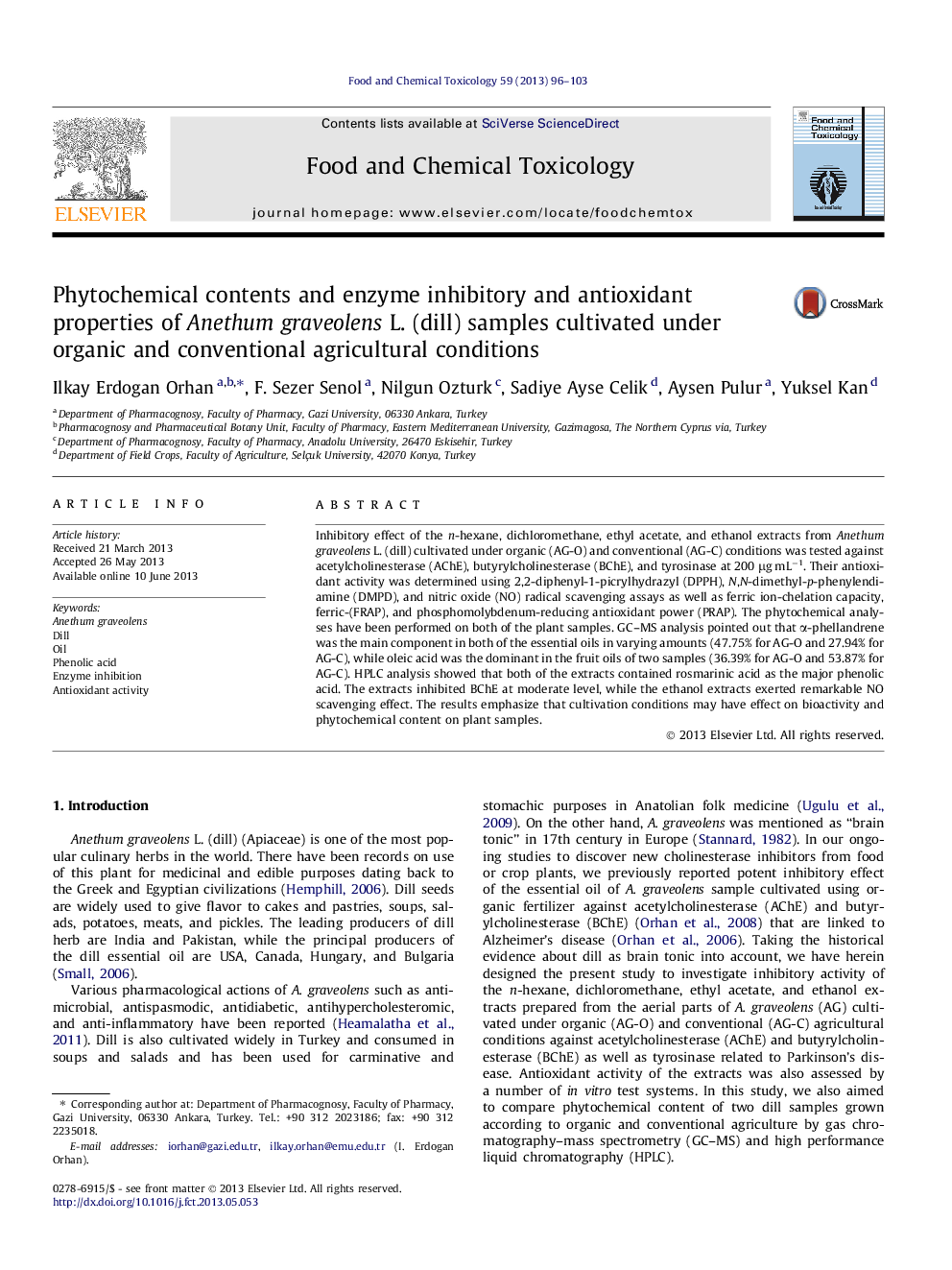| Article ID | Journal | Published Year | Pages | File Type |
|---|---|---|---|---|
| 5850997 | Food and Chemical Toxicology | 2013 | 8 Pages |
Abstract
Inhibitory effect of the n-hexane, dichloromethane, ethyl acetate, and ethanol extracts from Anethum graveolens L. (dill) cultivated under organic (AG-O) and conventional (AG-C) conditions was tested against acetylcholinesterase (AChE), butyrylcholinesterase (BChE), and tyrosinase at 200 μg mLâ1. Their antioxidant activity was determined using 2,2-diphenyl-1-picrylhydrazyl (DPPH), N,N-dimethyl-p-phenylendiamine (DMPD), and nitric oxide (NO) radical scavenging assays as well as ferric ion-chelation capacity, ferric-(FRAP), and phosphomolybdenum-reducing antioxidant power (PRAP). The phytochemical analyses have been performed on both of the plant samples. GC-MS analysis pointed out that α-phellandrene was the main component in both of the essential oils in varying amounts (47.75% for AG-O and 27.94% for AG-C), while oleic acid was the dominant in the fruit oils of two samples (36.39% for AG-O and 53.87% for AG-C). HPLC analysis showed that both of the extracts contained rosmarinic acid as the major phenolic acid. The extracts inhibited BChE at moderate level, while the ethanol extracts exerted remarkable NO scavenging effect. The results emphasize that cultivation conditions may have effect on bioactivity and phytochemical content on plant samples.
Related Topics
Life Sciences
Agricultural and Biological Sciences
Food Science
Authors
Ilkay Erdogan Orhan, F. Sezer Senol, Nilgun Ozturk, Sadiye Ayse Celik, Aysen Pulur, Yuksel Kan,
